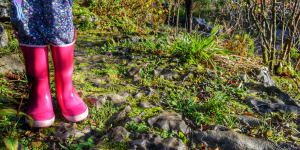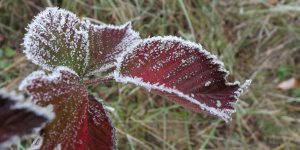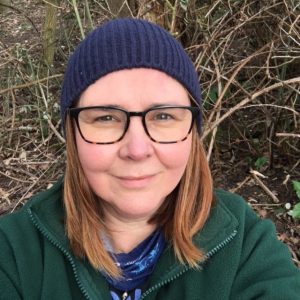I have worked in the early years since the early 1990s. Then about seven years ago, I became interested in forest schools and it has completely changed my life. My journey from indoors early years to completely outdoors has been a personal one. It has been full of learning, wonderful experiences and a few tough times.
My first really cold day I truly understood the importance of suitable clothing, especially socks. My feet were so cold that during my lunch break I had to walk twenty minutes to the nearest shops to buy an extra pair of socks. Predictably (in hindsight) by the time I had walked forty minutes back again, my feet weren’t cold anymore and I didn’t need those socks! But from then onwards I made sure I carried an extra pair of socks with me and in the very cold weather wore two pairs all day. Like the children, I learnt from my experiences and that is a lesson I will not forget.

One of the most wonderful things about forest school is the opportunities for children to learn from first-hand experiences every single day:
Imagine a child arrives in the morning and sees frost on the grass and leaves. They feel the cold, icy, crunchy surfaces and edges. As the day progresses and the sun’s rays touch those leaves, the child notices that the ice has gone and that the leaves feel wet and floppy now.
There are so many learning opportunities in this simple, natural flow to the day.

Could you do this indoors? Yes, you could – but it would take time to prepare. You would need to find something to freeze and you would need a freezer to freeze it in. You would need to plan where it can safely melt without causing a slip hazard or ruining the carpet. It takes time for the melting to happen, so what would be your heat source?
In the forest (or early years garden), nature takes care of this planning for you. Nature allows children to learn about frost on a frosty day, to learn about ice when the puddles freeze, to learn about melting when the sun shines. Nature also provides you with additional opportunities to observe what’s going on. The frost on some leaves melts before others, some stay frozen all day even though the sun is out and its warm enough to take our gloves off… why is that?
As the seasons change new learning opportunities unveil themselves to the children and the adults. We are so often learning together. Who knew box tree moth caterpillars and large cabbage white butterfly caterpillars look really similar? Not me until we experienced the spring of many caterpillars!
If you would like to know more about my journey and how I ended up in the woods, or you want to find ways of incorporating a more natural, nature-based, child-led way of learning in the outdoors into your early years setting, you can access my free webinar for Kinderly from here.

Jo Gilks has worked in the early years for over 30 years. After spending five years as an early years adviser, she became a Forest School Educator, working in outdoors nurseries and delivering Forest School training. She is a member of the Forest School Association and a trustee for Love Early Years.